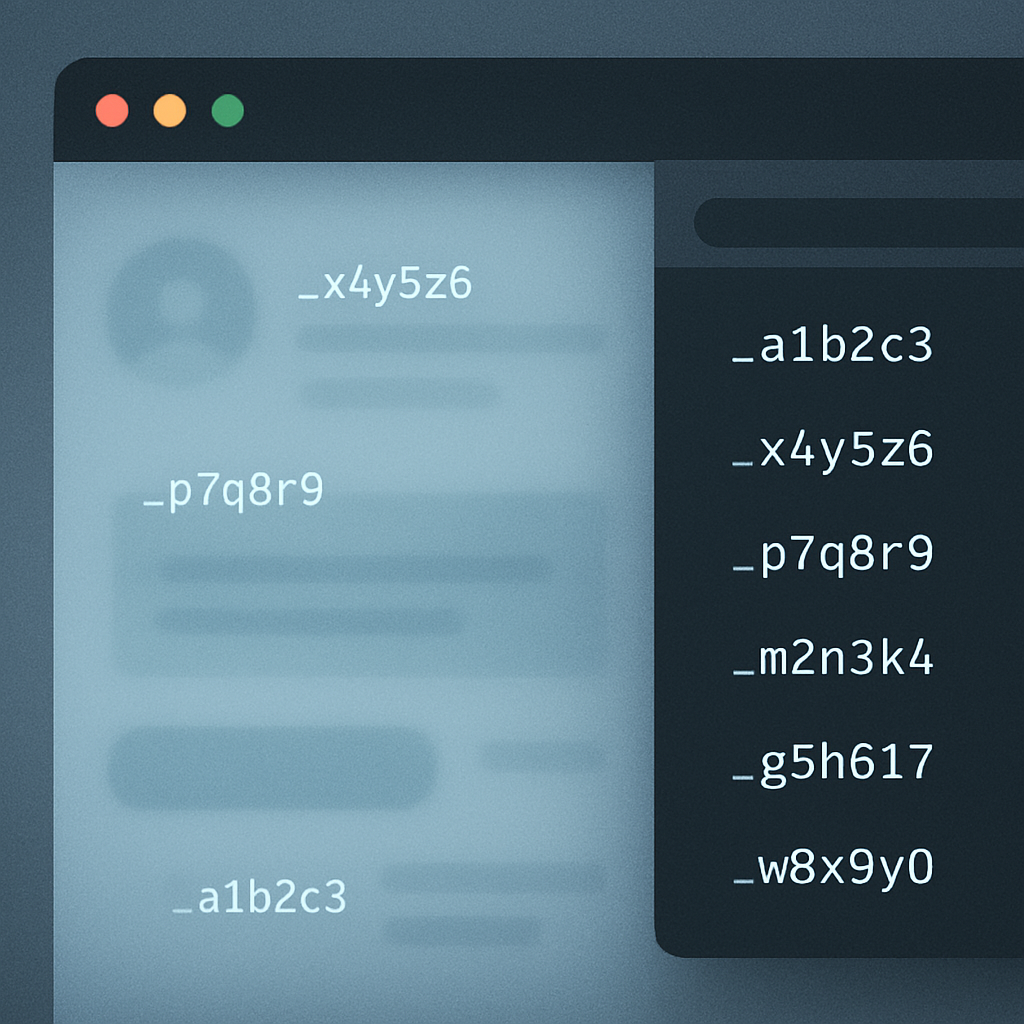Exploring the Purpose of Obfuscated CSS Class Names in Modern Web Design

When I first started as a self-taught web developer, I loved the thrill of clicking “View Source” on websites, eagerly exploring how the pages were structured. Nowadays, with Chrome’s Inspect tool, I can dig even deeper. As someone who enjoys breaking things apart, reverse engineering, and learning through exploration, I recently encountered something curious while building my own modern app that required user accounts. Inspecting various popular websites, I noticed their CSS class names were all jumbled and seemingly random. Intrigued, I decided to dig deeper and find out why. Here’s what I discovered for anyone else curious about these strange CSS class names.
Why these weird class names?
Sites like Facebook intentionally use randomized CSS class names as part of their strategy to make the site faster, safer, and easier to maintain, especially at scale.
Here’s what’s going on:
Security and Anti-Scraping
If Facebook’s classes were simple (.post, .like-button), it would be easy for bots to scrape and automate interactions. By using unpredictable names like x1xmvt09, they make it difficult for bots, spammers, and malicious scripts.
Benefits:
- Protects content from automated abuse.
- Makes it harder for attackers to inject harmful code.
- Keeps the UI authentic and secure.
Performance Boost
Shorter, randomized class names reduce file sizes. With billions of page loads daily, even small reductions in file size significantly improve loading speeds and bandwidth usage.
Benefits:
- Faster loading pages.
- Improved performance on mobile devices and slower networks.
Easier Maintenance for Developers
This might sound counterintuitive, but randomized class names help avoid naming conflicts when many developers collaborate on a large product. Automated tools generate unique class names behind the scenes, allowing developers to use simple class names like .container or .button without clashes.
Benefits:
- Prevents CSS conflicts across thousands of components.
- Simplifies development and team collaboration.
- Facilitates easy style updates across extensive codebases.
Supporting Robust Design Systems
Consistent user experience is essential. Randomized class names enforce style encapsulation, ensuring each UI element consistently matches the intended design system.
Benefits:
- Ensures every component adheres strictly to defined styles.
- Simplifies global design updates (change one style token to update the entire app).
Tools Behind the Scenes
Companies like Facebook use build tools such as CSS Modules and proprietary systems like Facebook’s “StyleX.“ Developers write easy-to-read styles, which these tools translate into optimized, secure, and lightweight stylesheets with randomized class names.
Trade-offs
There are some challenges:
- Debugging in production can be more difficult due to unclear class names.
- Inspecting live code can be confusing for designers and developers.
- Slightly limits third-party integrations or custom styling.
Despite these challenges, for platforms like Facebook, the benefits outweigh these minor drawbacks.
Conclusion
Next time you encounter these cryptic CSS class names, you’ll know there’s a thoughtful strategy behind it—protecting users, enhancing performance, and maintaining consistent design at a massive scale. It’s a practical approach to balancing engineering complexity and user-centric design.